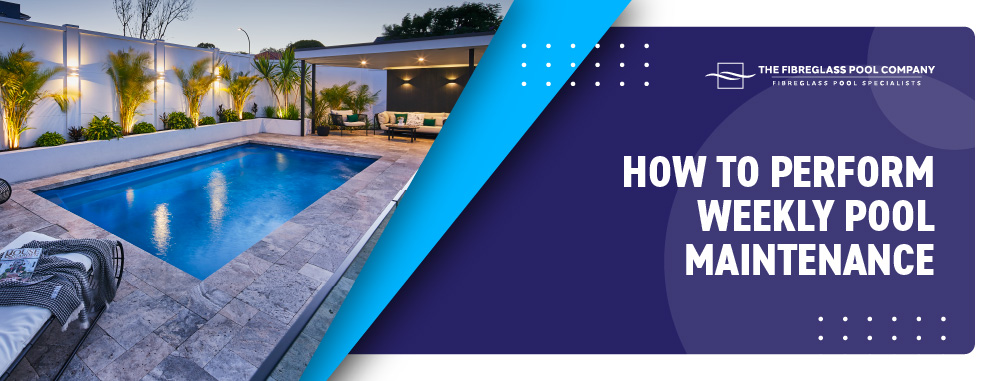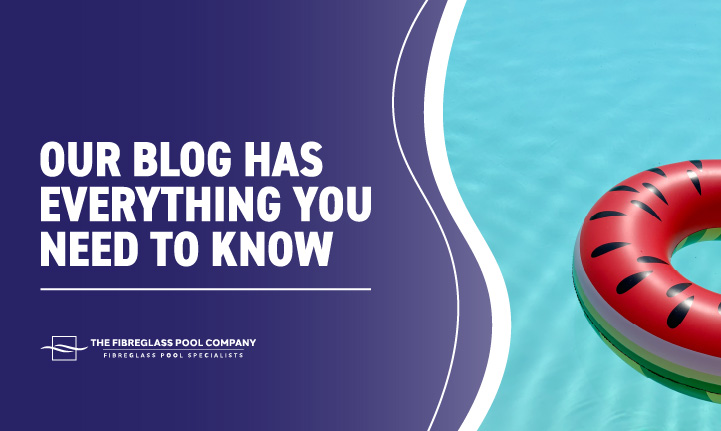Owning a pool is one of the greatest luxuries one can have, offering a retreat from the heat and a place for fun and relaxation. Whether it's a refreshing dip on a hot summer day or a gathering spot for family and friends, a pool can significantly enhance your quality of life. However, maintaining a clean, safe, and inviting pool requires regular upkeep and attention to detail. This blog post aims to guide pool owners through the essential steps of weekly pool maintenance. By following these tips, such as skimming debris, checking chemical levels, and ensuring proper filtration, you can ensure your pool remains in top shape. This not only prolongs the life of your pool but also provides years of enjoyment and cherished memories for you and your family.

Weekly Pool Maintenance Checklist: Step-by-Step Guide
Testing and Adjusting Water Chemistry
Ensuring your pool’s water chemistry is balanced is crucial for the safety of swimmers and the longevity of your pool equipment. Here’s what you need to do:
- Test the Water: Use a reliable pool testing kit to measure the levels of chlorine, pH, alkalinity, and calcium hardness. The ideal pH level should be between 7.2 and 7.8; chlorine should be between 1 and 3 ppm (parts per million); alkalinity should be between 80 and 120 ppm, and calcium hardness should be between 200 and 400 ppm. It’s important to test the water regularly, especially during peak swimming season, to ensure a safe and enjoyable swimming experience.
- Adjust Chemical Levels: Based on your test results, add the necessary chemicals to bring the water chemistry within the recommended ranges. Common chemicals used include chlorine or bromine for sanitation, pH increaser or decreaser, alkalinity increaser, and calcium hardness increaser. Always follow the manufacturer’s instructions for safe handling and dosing, and consider wearing protective gear like gloves and goggles. Proper chemical balance not only keeps the water clear and clean but also protects the pool equipment from damage.
- Retest After Adjustment: After adding chemicals, wait a few hours and retest the water to ensure the levels are within the desired range. This step is crucial to confirm that the adjustments you’ve made are accurate and the pool water is safe for swimmers. If the levels are still off, you may need to repeat the adjustment process. Consistent monitoring and adjustment of pool chemistry are key to maintaining a healthy swimming environment.
Skimming and Vacuuming Debris
Debris such as leaves, insects, and dirt can accumulate quickly, affecting water quality and potentially damaging your pool’s filtration system. Here’s how to keep your pool debris-free:
- Skim the Surface: Use a pool skimmer to remove floating debris from the water surface. It’s best to do this daily to prevent debris from sinking to the bottom.
- Vacuum the Pool Floor: Use a pool vacuum to clean the floor and walls of the pool. You can choose between manual and automatic pool vacuums based on your preference and budget.
- Brush the Walls: Brushing the walls and tile line helps prevent algae and calcium deposits from forming. Use a pool brush appropriate for your pool’s surface type.

Cleaning Pool Filters
Filters play a critical role in keeping your pool water clean by trapping dirt, debris, and contaminants. Regular cleaning of the pool filter ensures it functions effectively:
- Check Filter Pressure: Monitor the filter pressure gauge. A significant increase in pressure indicates that the filter needs cleaning.
- Clean or Backwash: Depending on your filter type (sand, cartridge, or DE), follow the manufacturer’s instructions for cleaning or backwashing. For cartridge filters, remove and rinse the cartridges thoroughly. For sand and DE filters, perform a backwash to clear out trapped debris.
Checking Equipment and Safety Features
Ensuring that your pool’s equipment and safety features are in good working order is essential for both performance and safety:
- Inspect Equipment: Check the pump, heater, and other equipment for any signs of wear, leaks, or damage. Make sure all components are functioning correctly.
- Examine Safety Features: Inspect the pool’s safety features, including fences, gates, and pool covers, to ensure they are secure and in good condition. Replace or repair any faulty equipment immediately.

Reasons Why Weekly Maintenance Is Crucial for Pool Longevity
Performing regular weekly maintenance has several long-term benefits:
- Prevents Equipment Damage: Regular cleaning and chemical balancing help prevent scale build-up, corrosion, and other issues that can damage your pool equipment.
- Maintains Water Quality: Consistent maintenance keeps the water clean and safe for swimming, reducing the risk of waterborne illnesses and algae growth.
- Extends Pool Life: By addressing minor issues before they become major problems, you can extend the life of your pool and its components, saving you money on repairs and replacements.
Tips for Making Weekly Maintenance Easier and More Efficient
To make your weekly maintenance routine more manageable, consider the following tips:
- Create a Schedule: Set aside specific days and times each week dedicated to pool maintenance. Consistency is key to keeping up with the tasks.
- Use Quality Tools: Invest in high-quality pool maintenance tools and equipment to make the job easier and more efficient.
- Automate Where Possible: Consider using automatic pool cleaners, chlorinators, and filtration systems to reduce the manual labour involved.
- Keep a Log: Maintain a log of your maintenance activities, including water test results and any adjustments made. This will help you track trends and identify any recurring issues.
Encouragement for Regular Maintenance
Regular pool maintenance might seem like a chore, but it’s an essential part of pool ownership. By dedicating some time each week to these tasks, you can ensure that your pool remains a clean, safe, and enjoyable space for you and your family year-round. This involves not just skimming leaves and debris off the surface, but also testing the water’s chemical balance to prevent any harmful bacteria from developing. Brushing the walls and floor of the pool helps to keep algae at bay, while checking the filtration system ensures it works efficiently. So grab your skimmer, test kit, and pool brush, and take pride in maintaining your backyard oasis.
Owning a pool is one of the greatest luxuries one can have, offering a retreat from the heat and a place for fun and relaxation. Whether it's a refreshing dip on a hot summer day or a gathering spot for family and friends, a pool can significantly enhance your quality of life. However, maintaining a clean, safe, and inviting pool requires regular upkeep and attention to detail. This blog post aims to guide pool owners through the essential steps of weekly pool maintenance. By following these tips, such as skimming debris, checking chemical levels, and ensuring proper filtration, you can ensure your pool remains in top shape. This not only prolongs the life of your pool but also provides years of enjoyment and cherished memories for you and your family.

Weekly Pool Maintenance Checklist: Step-by-Step Guide
Testing and Adjusting Water Chemistry
Ensuring your pool’s water chemistry is balanced is crucial for the safety of swimmers and the longevity of your pool equipment. Here’s what you need to do:
- Test the Water: Use a reliable pool testing kit to measure the levels of chlorine, pH, alkalinity, and calcium hardness. The ideal pH level should be between 7.2 and 7.8; chlorine should be between 1 and 3 ppm (parts per million); alkalinity should be between 80 and 120 ppm, and calcium hardness should be between 200 and 400 ppm. It’s important to test the water regularly, especially during peak swimming season, to ensure a safe and enjoyable swimming experience.
- Adjust Chemical Levels: Based on your test results, add the necessary chemicals to bring the water chemistry within the recommended ranges. Common chemicals used include chlorine or bromine for sanitation, pH increaser or decreaser, alkalinity increaser, and calcium hardness increaser. Always follow the manufacturer’s instructions for safe handling and dosing, and consider wearing protective gear like gloves and goggles. Proper chemical balance not only keeps the water clear and clean but also protects the pool equipment from damage.
- Retest After Adjustment: After adding chemicals, wait a few hours and retest the water to ensure the levels are within the desired range. This step is crucial to confirm that the adjustments you’ve made are accurate and the pool water is safe for swimmers. If the levels are still off, you may need to repeat the adjustment process. Consistent monitoring and adjustment of pool chemistry are key to maintaining a healthy swimming environment.
Skimming and Vacuuming Debris
Debris such as leaves, insects, and dirt can accumulate quickly, affecting water quality and potentially damaging your pool’s filtration system. Here’s how to keep your pool debris-free:
- Skim the Surface: Use a pool skimmer to remove floating debris from the water surface. It’s best to do this daily to prevent debris from sinking to the bottom.
- Vacuum the Pool Floor: Use a pool vacuum to clean the floor and walls of the pool. You can choose between manual and automatic pool vacuums based on your preference and budget.
- Brush the Walls: Brushing the walls and tile line helps prevent algae and calcium deposits from forming. Use a pool brush appropriate for your pool’s surface type.

Cleaning Pool Filters
Filters play a critical role in keeping your pool water clean by trapping dirt, debris, and contaminants. Regular cleaning of the pool filter ensures it functions effectively:
- Check Filter Pressure: Monitor the filter pressure gauge. A significant increase in pressure indicates that the filter needs cleaning.
- Clean or Backwash: Depending on your filter type (sand, cartridge, or DE), follow the manufacturer’s instructions for cleaning or backwashing. For cartridge filters, remove and rinse the cartridges thoroughly. For sand and DE filters, perform a backwash to clear out trapped debris.
Checking Equipment and Safety Features
Ensuring that your pool’s equipment and safety features are in good working order is essential for both performance and safety:
- Inspect Equipment: Check the pump, heater, and other equipment for any signs of wear, leaks, or damage. Make sure all components are functioning correctly.
- Examine Safety Features: Inspect the pool’s safety features, including fences, gates, and pool covers, to ensure they are secure and in good condition. Replace or repair any faulty equipment immediately.

Reasons Why Weekly Maintenance Is Crucial for Pool Longevity
Performing regular weekly maintenance has several long-term benefits:
- Prevents Equipment Damage: Regular cleaning and chemical balancing help prevent scale build-up, corrosion, and other issues that can damage your pool equipment.
- Maintains Water Quality: Consistent maintenance keeps the water clean and safe for swimming, reducing the risk of waterborne illnesses and algae growth.
- Extends Pool Life: By addressing minor issues before they become major problems, you can extend the life of your pool and its components, saving you money on repairs and replacements.
Tips for Making Weekly Maintenance Easier and More Efficient
To make your weekly maintenance routine more manageable, consider the following tips:
- Create a Schedule: Set aside specific days and times each week dedicated to pool maintenance. Consistency is key to keeping up with the tasks.
- Use Quality Tools: Invest in high-quality pool maintenance tools and equipment to make the job easier and more efficient.
- Automate Where Possible: Consider using automatic pool cleaners, chlorinators, and filtration systems to reduce the manual labour involved.
- Keep a Log: Maintain a log of your maintenance activities, including water test results and any adjustments made. This will help you track trends and identify any recurring issues.
Encouragement for Regular Maintenance
Regular pool maintenance might seem like a chore, but it’s an essential part of pool ownership. By dedicating some time each week to these tasks, you can ensure that your pool remains a clean, safe, and enjoyable space for you and your family year-round. This involves not just skimming leaves and debris off the surface, but also testing the water’s chemical balance to prevent any harmful bacteria from developing. Brushing the walls and floor of the pool helps to keep algae at bay, while checking the filtration system ensures it works efficiently. So grab your skimmer, test kit, and pool brush, and take pride in maintaining your backyard oasis.


